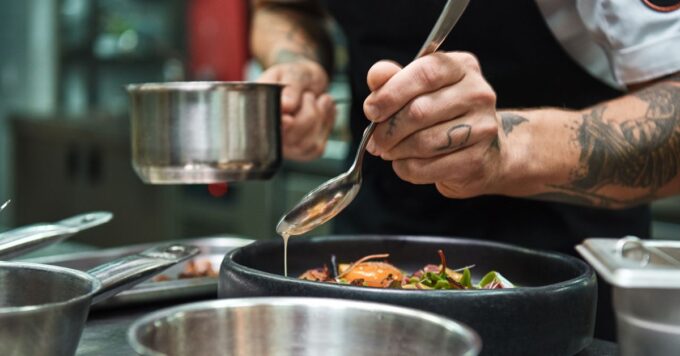
Opening a restaurant requires careful planning, especially when it comes to outfitting your kitchen. The right equipment can be the difference between a smooth service and chaotic dinner rushes. A well-equipped kitchen forms the backbone of any successful restaurant operation. Every piece of equipment plays a crucial role in delivering exceptional dining experiences to your customers.
Commercial-Grade Cookware Sets the Foundation
Quality cookware remains non-negotiable for professional kitchens. Heavy-duty pots and pans withstand constant use while distributing heat evenly across cooking surfaces. Stainless steel options offer durability and easy cleaning, while cast iron provides superior heat retention for searing and braising.
Restaurant-quality saucepans, stockpots, and sauté pans come in various sizes to accommodate different batch sizes. Many successful Italian restaurants rely on specific cookware for traditional dishes like risotto, which requires precise temperature control and consistent stirring.
Prep Equipment Streamlines Food Production
Food processors and mixers reduce labor time for repetitive tasks, which makes them essential for kitchen efficiency. Commercial-grade units handle large quantities without overheating or breaking down. Cutting boards, knives, and mandoline slicers ensure consistent prep work. Don’t forget to get high-quality options, though. Professional knife sets maintain sharp edges longer than consumer versions.
Storage Solutions Maximize Organization
Shelving systems organize dry goods, small equipment, and serving dishes. Consider opting for stainless steel units, as they resist corrosion in humid kitchen environments. Storage containers with tight-fitting lids preserve ingredient freshness while preventing pest contamination. Clear containers allow staff to quickly identify contents and monitor inventory levels, while labeled containers reduce confusion during busy service periods.
Specialized Equipment Enhances Menu Capabilities
Grills, fryers, and salamanders expand the cooking methods available to kitchen staff. Char-grills add distinctive flavors to proteins and vegetables, while deep fryers maintain consistent oil temperatures for crispy results every time. Before purchasing equipment, consider your menu and the dishes you plan to prepare. Italian restaurants might prioritize pasta machines and wood-fired ovens, while steakhouses focus on high-temperature grills and broilers.
Material Quality Impacts Long-Term Success
Aluminum plays a vital role in kitchens due to its excellent heat conductivity and lightweight properties. Aluminum cookware heats quickly and evenly, reducing cooking times and energy costs. This metal resists warping under high temperatures, making it ideal for busy restaurant environments.
Stainless steel equipment offers superior durability and maintains its appearance longer than other materials. Food-grade surfaces prevent bacterial growth and simplify cleaning procedures required by health departments.
Smart Shopping Strategies Save Money
Purchasing quality equipment upfront reduces replacement costs over time. Commercial-grade items typically include warranties that protect your investment. Also, energy-efficient models can lower utility bills while meeting environmental standards. Used equipment from reputable dealers provides budget-friendly alternatives without sacrificing functionality. Certified refurbished units often perform like new at
significant savings. You don’t need to buy brand-new appliances to produce high-quality dishes.
Building Your Dream Kitchen
Successful restaurant kitchens balance functionality with budget constraints. Prioritize essential items first, then add specialized equipment as revenue grows. Quality equipment supports consistent food preparation that keeps customers returning for memorable dining experiences.